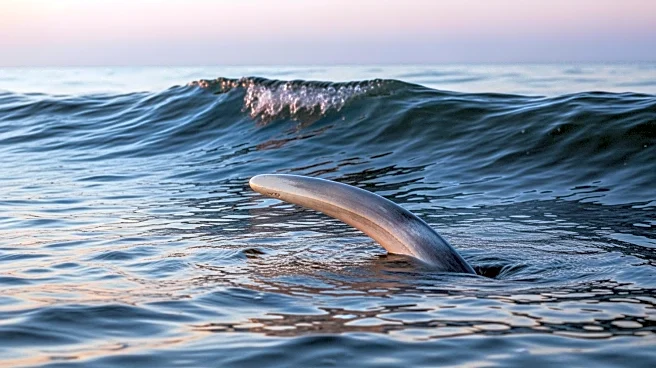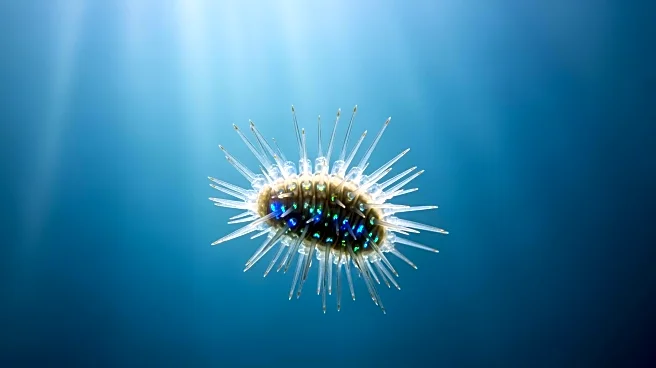What's Happening?
Researchers have identified and photographed ginkgo-toothed beaked whales alive at sea for the first time, following a significant research effort off the shores of Mexico. These cetaceans were previously
known only from dead specimens that had washed ashore or from bycatch. The discovery was initiated by a distinct echolocation pulse recorded in the North Pacific, leading researchers to a single beaked whale in June 2024. Within days, a small group of whales, including a battle-scarred adult male and a female with a calf, was found. To confirm the species, researchers collected a DNA sample by shooting one of the whales with a crossbow, ensuring the whale was unharmed. The findings were published in the journal Marine Mammal Science, highlighting the persistence and determination of the research team.
Why It's Important?
The discovery of the ginkgo-toothed beaked whales alive in the wild is significant for marine biology, as these whales are among the least-known large animals on the planet. Understanding their distribution and behavior can provide insights into their ecological role and vulnerability to human activities, such as high-seas fisheries. The ability to identify these whales through passive acoustic monitoring could lead to better conservation strategies and protection measures. This discovery also underscores the importance of perseverance in scientific research, as the team spent five years searching for these elusive creatures.
What's Next?
The research team plans to continue their efforts to identify other beaked whale species alive in the wild, including Perrin's beaked whales, which are known from only a few stranded specimens. By matching underwater calls to specific species, researchers aim to learn more about the distribution and population sizes of these whales, which could inform conservation efforts. The use of passive acoustic monitoring could become a crucial tool in understanding and protecting these marine mammals from human disturbances.
Beyond the Headlines
The discovery of these whales highlights the broader issue of marine biodiversity and the challenges in studying deep-diving, cryptic species. It raises questions about the impact of human activities on marine ecosystems and the need for international cooperation in conservation efforts. The use of innovative techniques, such as DNA sampling from live animals, demonstrates the potential for advancing scientific knowledge while minimizing harm to wildlife.













